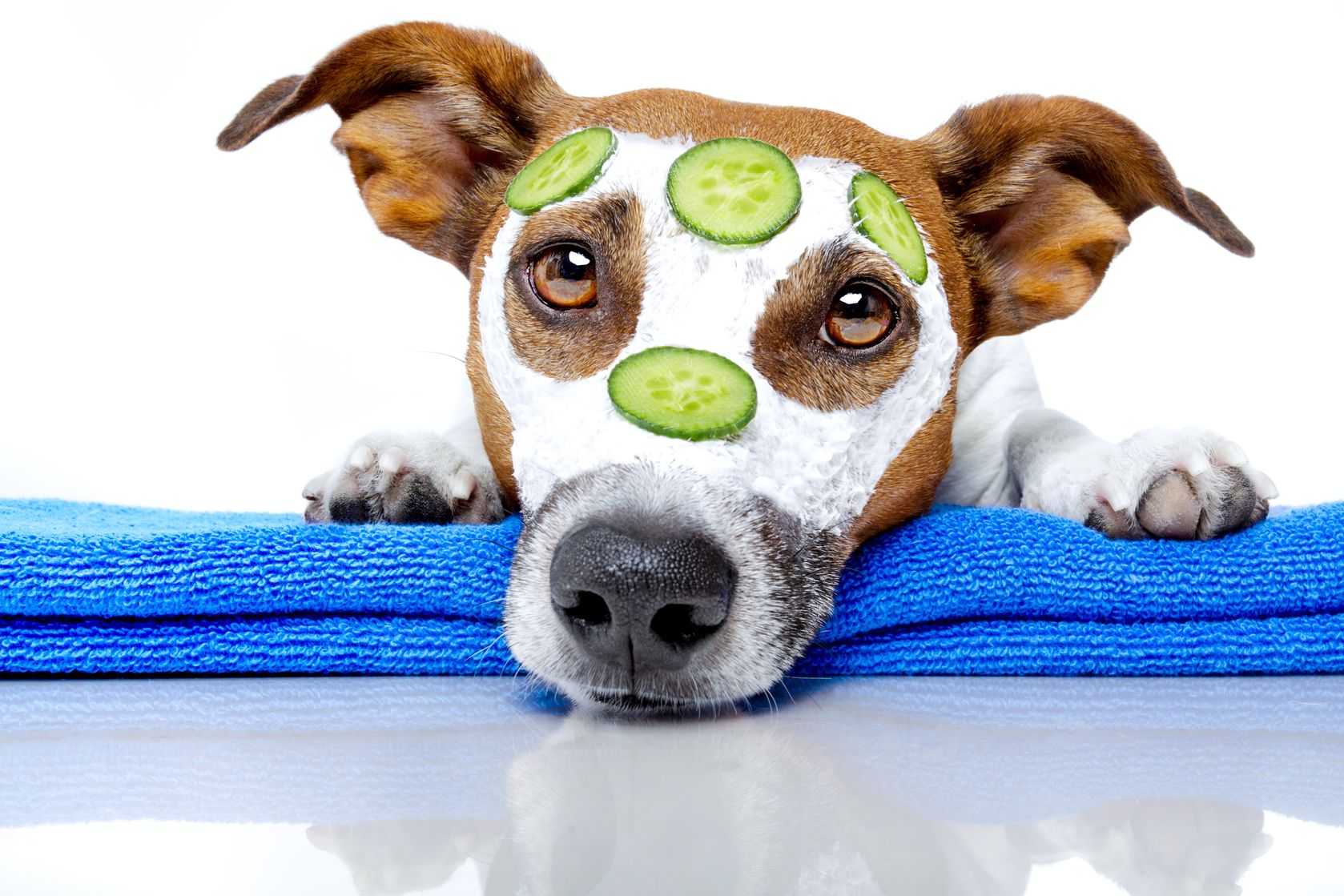Massage Therapy… For Dogs!
February 20th, 2017
When our dog is in pain, how do we know?
Pain, and fear of pain, place physical and emotional stress on our dog which puts them physiologically and psychologically out of balance. Acute pain is adaptive – it makes our dog aware that they are injured so that they slow down, helping to protect their body from further damage and enabling their body tissues to heal. Chronic pain is maladaptive – the prolonged stress it places on our dog’s body maintains high levels of the stress hormone cortisol, which suppresses the immune system, reduces the ability of body tissues to heal and maintains the pain. Like us, when our dog is in pain (or fear of it), they will try to protect themselves by attempting to avoid the conditions that trigger or exacerbate these sensations, and by engaging in activities that help to relieve their discomfort.
Pain-related behaviour changes can arise suddenly or develop gradually over time, and may be observed in your dog’s daily activities (e.g. loss of enthusiasm for walks, increased irritability), their body language (e.g. panting when not hot, moving away from touch), through their vocalisations (e.g. sudden squealing), their posture (e.g. holding body stiffly) and through their way of moving (e.g. walking in a slower, more considered way).
Dogs are often very good at hiding pain, and by the time we’ve noticed a change in their behaviour our dog may be in a lot of discomfort. Dogs will also often continue to go about their favourite activities like chasing and retrieving balls even when they are in pain, since their motivation to play is so high and they are not aware of the increasing damage they are doing to themselves.
It is the soft tissues (e.g. muscles, fascia, tendons, ligaments, skin) of your dog’s body that hold his bones and organs in place and enable him to move. Injury and illness can cause pain in these soft tissues, both through primary damage (e.g. muscle tear/strain sustained during play) and through secondary damage (e.g. soft tissues that shorten and thicken to help stabilise an arthritic joint become tight, congested and more vulnerable to further injury).
Massage is a natural, drug-free, hands-on therapy which involves the manual manipulation of the soft tissues of your dog’s body. With approval from your dog’s vet, massage provided by a Canine Massage Guild therapist can be used incredibly effectively to relieve, manage and prevent pain caused by injury and disease by:
- Warming, lengthening and relaxing stiff, tired and hypertonic muscles and increasing range of motion in the joints
- Releasing soft tissue restrictions such as trigger points (muscle knots) and scar tissue
- Promoting better circulation of blood, nutrients and oxygen and removal of waste products to enhance overall good tissue health
- Enhancing lymph circulation, reducing inflammatory swelling and strengthening the immune system
- Decreasing tissue pressure on nerves, interrupting nervous system pain receptors and soothing nerve endings
- Lowering blood pressure and heart rate and stimulating the release of natural endorphins to reduce anxiety and stress levels and increase your dog’s ability to relax and sleep
- Enhancing and supporting the body’s natural healing processes following injury, surgery and disease
- Reducing the risk of injury and optimising sports performance by preparing your dog physically and psychologically for work and competition and supporting their body’s natural healing processes following strenuous activity
In the same way that your dog’s behaviour can tell you when he is in pain, equally his behaviour can tell you when his pain has been reduced or eliminated. Joyfully, for pain-inflicted dogs who have received 1 to 3 sessions of massage therapy, countless owners report afterwards that they have noticed clear, positive changes in their dog’s behaviour.
So, be vigilant in observing your dog’s behaviour: he may be trying to tell you he’s in pain, and if he is, it may be that massage provided by your local Canine Massage Guild therapist could be just what your dog is waiting for to help him live a happier, healthier life.
Sara Alan-Smith is a Clinical Canine Massage Therapist at Complete Canine Massage Therapy (www.completecaninemassage.co.uk) and member of the Canine Massage Guild (www.k9-massageguild.co.uk)
